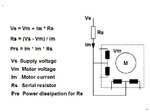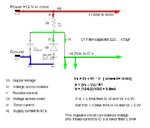kodex
Newbie level 4
- Joined
- Nov 8, 2011
- Messages
- 7
- Helped
- 0
- Reputation
- 0
- Reaction score
- 0
- Trophy points
- 1,281
- Location
- Milwaukee, WI
- Activity points
- 1,342
Hello all,
I am attempting to construct my own small CNC mill using the circuitry found here: Easy to build CNC Mill Stepper Motor and Driver circuits
I have one axis of the machine wired up, but I'm stuck. For protecting the motor, the gentleman who designed it used a small light bulb in place of a resistor. I would prefer to just use a resistor as I don't have access to the same type of bulbs he used. I'm just at a loss as knowing what type of resistor to select. How do I figure out many ohms/watts it needs to be rated for?
Thanks,
Steve
I am attempting to construct my own small CNC mill using the circuitry found here: Easy to build CNC Mill Stepper Motor and Driver circuits
I have one axis of the machine wired up, but I'm stuck. For protecting the motor, the gentleman who designed it used a small light bulb in place of a resistor. I would prefer to just use a resistor as I don't have access to the same type of bulbs he used. I'm just at a loss as knowing what type of resistor to select. How do I figure out many ohms/watts it needs to be rated for?
Thanks,
Steve


